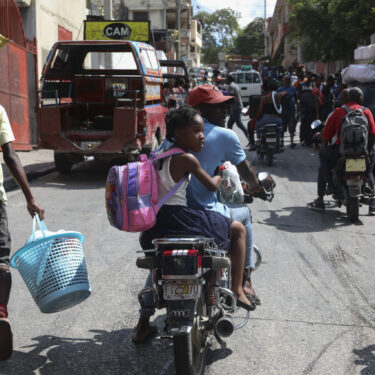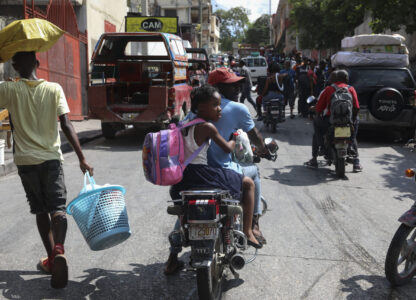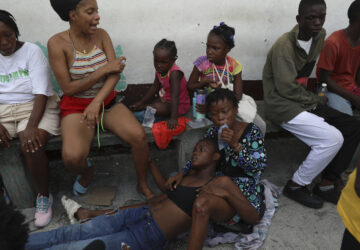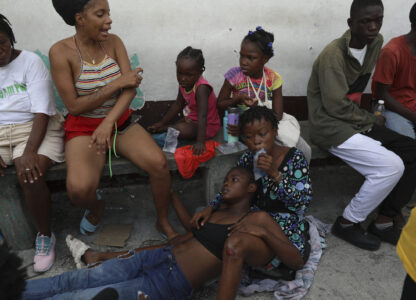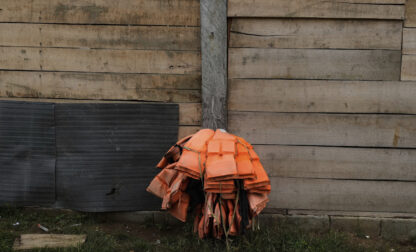SAN JUAN, Puerto Rico (AP) — Gangs in Haiti are recruiting children at unprecedented levels, with the number of minors targeted soaring by 70% in the past year, according to a report released Monday by UNICEF.
Currently, between 30% to 50% of all gang members in the violence-wracked country are children, according to the U.N.
“This is a very concerning trend,” said Geeta Narayan, UNICEF’s representative in Haiti.
The increase comes as poverty deepens and violence increases amid political instability, with gangs that control 85% of Port-au-Prince attacking once peaceful communities in a push to assume total control of the capital.
Young boys are often used as informers “because they’re invisible and not seen as a threat,” Narayan said in a phone interview from Haiti. Some are given weapons and forced to participate in attacks.
Girls, meanwhile, are forced to cook, clean and even used as so-called “wives” for gang members.
“They’re not doing this voluntarily,” Narayan said. “Even when they are armed with weapons, the child here is the victim.”
Easy prey
In a country where more than 60% of the population lives on less than $4 a day and hundreds of thousands of Haitians are starving or nearing starvation, recruiting children is often easy.
One minor who was in a gang said he was paid $33 every Saturday, while another said he was paid thousands of dollars in his first month in a gang operation, according to a U.N. Security Council report.
“Children and families are becoming increasingly desperate in some cases because of the extreme poverty,” Narayan said.
If children refuse to join a gang, gunmen often threaten them or their families or simply abduct them.
Gangs also prey on children who are separated from their families after they are deported from the Dominican Republic, which shares a border with Haiti on the island of Hispaniola.
“Those children are increasingly the ones targeted,” Narayan said.
Gangs aren’t the only threat as a vigilante movement that began last year to target suspected gang members gains momentum.
UNICEF said children “are often viewed with suspicion, and risk being branded as spies or even killed by vigilante movements. When they defect or refuse to join the violence, their lives and safety are immediately at risk.”
A video posted on social media last week after gangs attacked an area around an upscale community showed the body of a child lying next to an adult who also was slain. Police said that at least 28 suspected gang members were killed that day as residents armed with guns and machetes fought side-by-side with officers.
Increased vulnerability
The gangs that recruit the most children are 5 Segond, Brooklyn, Kraze Barye, Grand Ravine and Terre Noire, according to the U.N. Security Council report.
Usually, new recruits are ordered to buy food and are given money to “buy friends” as gangs observe them. Then, they participate in confrontations and are promoted if they kill someone, for example. After two or three years in the gang, the recruit becomes part of the entourage if they prove they weren’t a spy, according to the report.
Recruitment is surging as many schools remain closed and children become increasingly vulnerable, with gang violence leaving more than 700,000 people homeless in recent years, including an estimated 365,000 minors. Many of them live in makeshift shelters where they’re preyed upon by gangs and face physical and sexual violence.
“Criminal groups in Haiti are subjecting girls and women to horrific sexual abuse,” stated a report published Monday by Human Rights Watch.
The report quoted a 14-year-old girl from the capital who said she was abducted and raped multiple times by different men for five days in a house with six other girls who also were raped and beaten.
Human Rights Watch noted that while fighting between armed groups has decreased this year, attacks on Haitians, police and critical infrastructure has increased.
“Criminal groups have often used sexual violence to instill fear in rival territories,” it said.
‘It’s not all rosy’
Gangs are targeting children as young as eight years old, and the longer they spend with an armed group, the harder it is to rescue them and reintegrate them into society, according to experts.
Violence is rewarded and encouraged, which Narayan said is extremely harmful to a child’s psychosocial development.
Children quit gangs in several ways: some leave willingly, others escape and sometimes nonprofits will find them and take them to centers where they receive medical care if needed as well as psychological help and other aid.
“There is a transition period,” Narayan said. ”It’s not all rosy. It does take time on all sides.”

